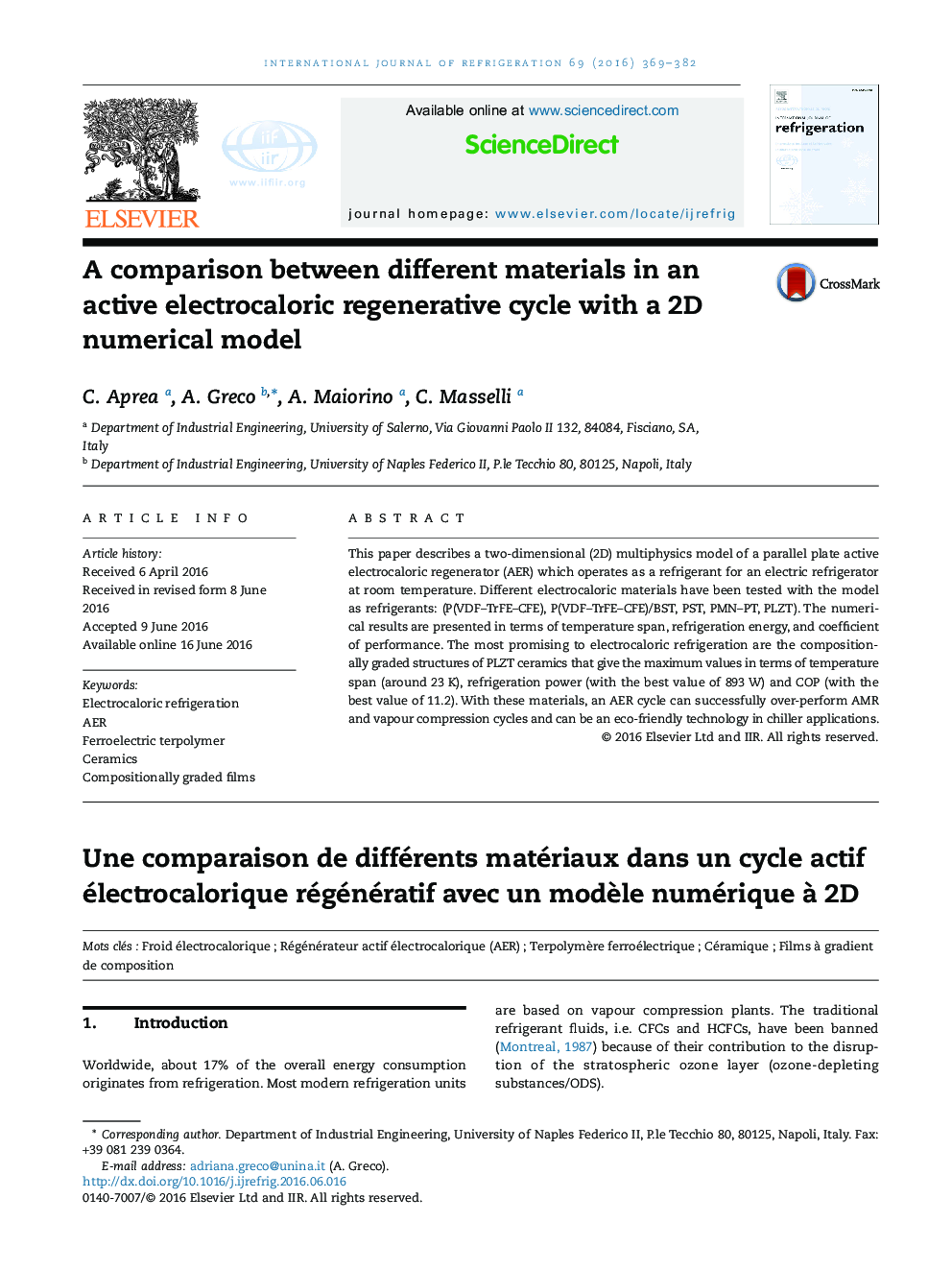| کد مقاله | کد نشریه | سال انتشار | مقاله انگلیسی | نسخه تمام متن |
|---|---|---|---|---|
| 789255 | 1466396 | 2016 | 14 صفحه PDF | دانلود رایگان |

• 2D model of an active electrocaloric regenerative refrigeration cycle.
• Comparison between different electrocaloric materials.
• Compositionally graded structures of PLZT ceramics are the most performant electrocaloric materials.
• An AER cycle can successfully over-perform AMR and vapour compression cycles.
• AER cycle can be an eco-friendly technology in chiller applications.
This paper describes a two-dimensional (2D) multiphysics model of a parallel plate active electrocaloric regenerator (AER) which operates as a refrigerant for an electric refrigerator at room temperature. Different electrocaloric materials have been tested with the model as refrigerants: (P(VDF–TrFE–CFE), P(VDF–TrFE–CFE)/BST, PST, PMN–PT, PLZT). The numerical results are presented in terms of temperature span, refrigeration energy, and coefficient of performance. The most promising to electrocaloric refrigeration are the compositionally graded structures of PLZT ceramics that give the maximum values in terms of temperature span (around 23 K), refrigeration power (with the best value of 893 W) and COP (with the best value of 11.2). With these materials, an AER cycle can successfully over-perform AMR and vapour compression cycles and can be an eco-friendly technology in chiller applications.
Journal: International Journal of Refrigeration - Volume 69, September 2016, Pages 369–382